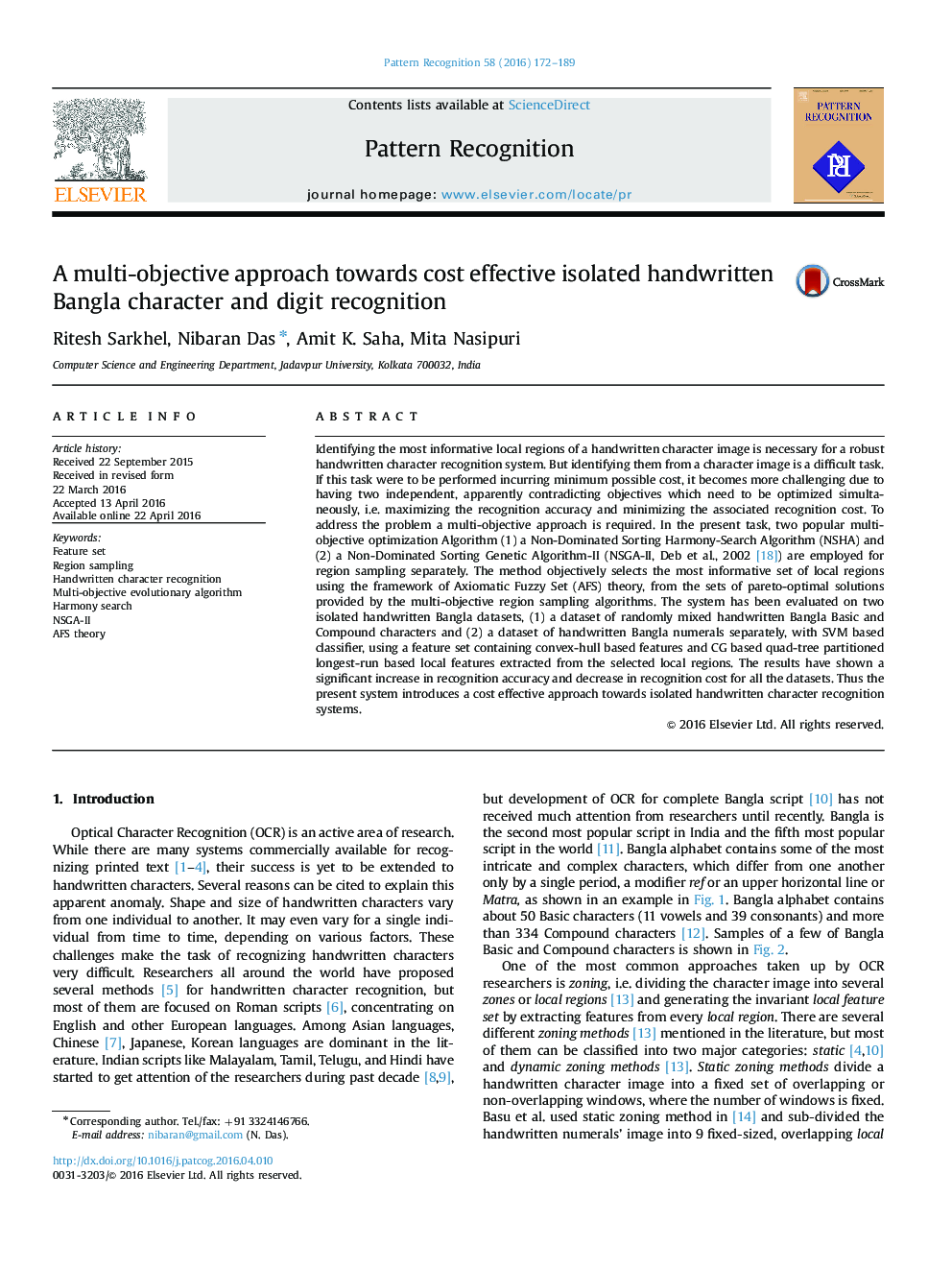| Article ID | Journal | Published Year | Pages | File Type |
|---|---|---|---|---|
| 533125 | Pattern Recognition | 2016 | 18 Pages |
•Developed a cost effective approach towards handwritten character recognition system.•A multi-objective region sampling methodology for isolated handwritten Bangla characters and digits recognition has been proposed.•A non-dominated sorting harmony search algorithm based region sampling and a non-dominated sorting genetic algorithm based region sampling methodology have been developed.•An AFS theory based fuzzy logic is utilized to develop a model for combining the pareto-optimal solutions from two multi-objective heuristics algorithms.•Maximum recognition accuracies of 86.6478% and 98.23% have been achieved with 0.234% and 12.60% decrease in recognition cost for handwritten Bangla characters and digits respectively.
Identifying the most informative local regions of a handwritten character image is necessary for a robust handwritten character recognition system. But identifying them from a character image is a difficult task. If this task were to be performed incurring minimum possible cost, it becomes more challenging due to having two independent, apparently contradicting objectives which need to be optimized simultaneously, i.e. maximizing the recognition accuracy and minimizing the associated recognition cost. To address the problem a multi-objective approach is required. In the present task, two popular multi-objective optimization Algorithm (1) a Non-Dominated Sorting Harmony-Search Algorithm (NSHA) and (2) a Non-Dominated Sorting Genetic Algorithm-II (NSGA-II, Deb et al., 2002 [18]) are employed for region sampling separately. The method objectively selects the most informative set of local regions using the framework of Axiomatic Fuzzy Set (AFS) theory, from the sets of pareto-optimal solutions provided by the multi-objective region sampling algorithms. The system has been evaluated on two isolated handwritten Bangla datasets, (1) a dataset of randomly mixed handwritten Bangla Basic and Compound characters and (2) a dataset of handwritten Bangla numerals separately, with SVM based classifier, using a feature set containing convex-hull based features and CG based quad-tree partitioned longest-run based local features extracted from the selected local regions. The results have shown a significant increase in recognition accuracy and decrease in recognition cost for all the datasets. Thus the present system introduces a cost effective approach towards isolated handwritten character recognition systems.
Graphical abstractSchematic representation of the integrated system developed under present work.Figure optionsDownload full-size imageDownload high-quality image (121 K)Download as PowerPoint slide
